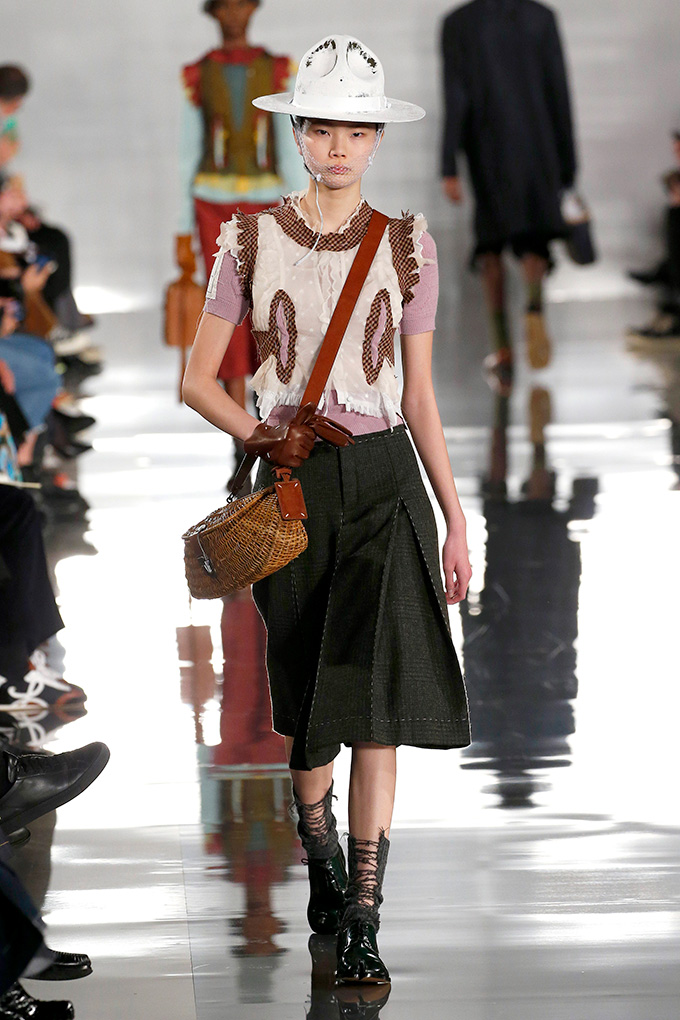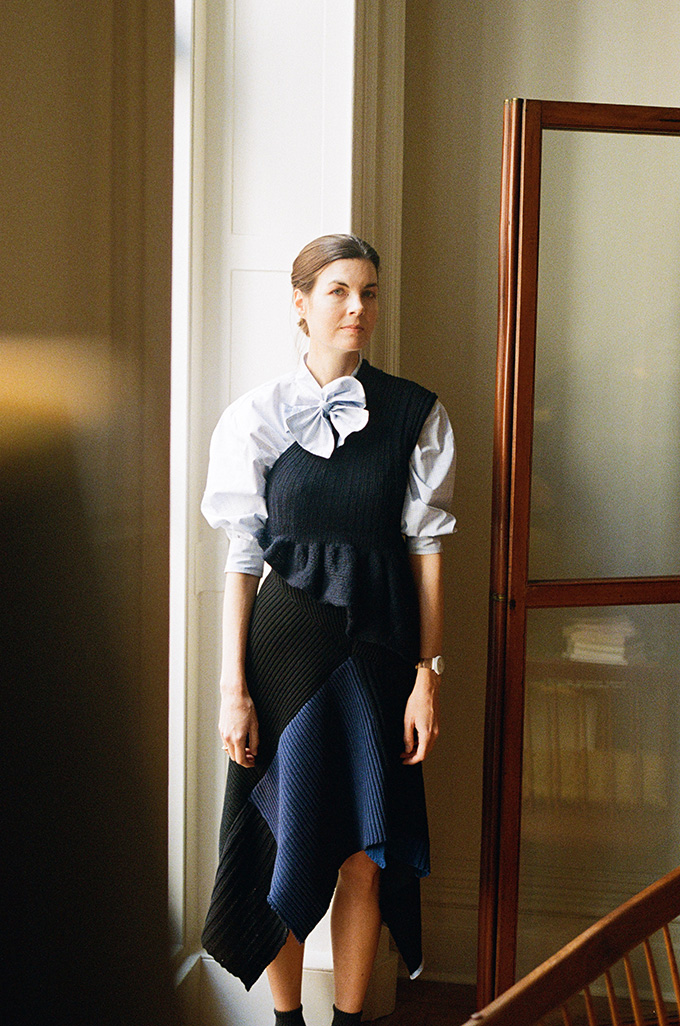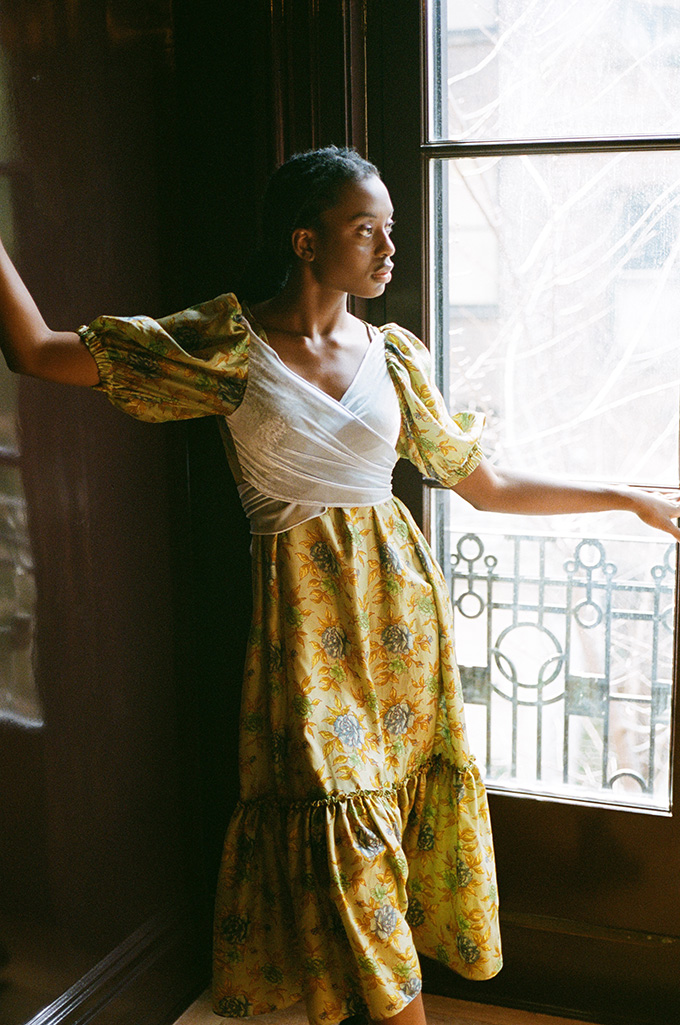Have you wondered where the old clothes go? Far from being a cautionary childhood tale about fashion and waste, this is a serious question that is being considered by fashion designers as they attempt to make the shift towards more sustainable practices in their work. Whether it is committing to halve greenhouse gas emissions in 10 years, like Gucci has pledged, or sourcing raw materials more responsibly, as LVMH has promised, practical actions have been in motion to turn the industry towards a greener future.
One sustainable movement that has been on the upswing is upcycling. Upcycling is the process of refashioning waste materials into new products and is one way that brands are closing the loop in their production cycles.
Taking upcycling beyond being just another buzzword is Maison Margiela, a house whose history has been intertwined with innovative uses of material under pioneering founder Martin Margiela, and is continued under creative director John Galliano today. For its autumn/winter 2020 show, the brand announced a project, Recicla, to bring sustainability and the house’s ethos of out-of- the-box thinking together.

Recicla—a nifty portmanteau that fuses ‘recycle’ and ‘replica’—builds on the house’s Replica line conceived by Margiela and is Galliano’s exploration of transforming vintage clothing into very new, very now pieces for a current season. Think coats sheared in half and sewn together with dresses, raw hems visible and trailing, the brand’s instantly recognisable 5AC bags made with leather leftovers from luxury handbag factories, and wonderfully versatile wicker bags woven from taro leaves.
“It’s slower fashion, it’s all those things that we believe in and that you can give something another life, longevity, and it’s also buying with a conscience. Recicla is really about recycling and upscaling, and the joy that we will be able to sell these pieces amongst the rest of the collection just thrills me,” Galliano explained in an episode of his podcast, The Memory Of…, that was released after the autumn/winter 2020 show.
Of course, other brands are also building this concept of upcycling clothing and deadstock material into fresh collections. One brand that launched with this idea is Switzerland-based Sottes. Started in 2017 by designer duo Jeanne Guenat and Elliot Upton, the brand is gender-less, season-less and size-less, and sources deadstock material to create its collections.
Necessity is often the mother of invention and this has led Guenat and Upton to be more creative and eco-conscious in their design- thinking. “When we came into the industry with our brand, we believed it should be one of our priorities to incorporate some type of ecological method and philosophy if we are to change the way fashion is being produced today,” explain the duo of their decision to focus on working with deadstock fabric.

New York-based label Rentrayage, founded by designer Erin Beatty, also turned to the deadstock approach, albeit with a focus on sourcing and utilising vintage clothing. Fans will recognise Beatty from her previous job as co-designer of womenswear label Suno, which has since shuttered. The resourceful designer then landed on the idea of creating special, thoughtfully crafted pieces while championing sustainability and real change in the industry.
“Honestly, after researching the wormhole that is fashion sustainability, I realised that only by using vintage clothing could I be as creative as I wanted without the waste that goes into creating new materials,” Beatty says about the origins of the brand from her home in New York. “Even the most sustainable fabrics when created from scratch are wasteful.”



Rentrayage gets its name from the French word for mending, which Beatty discovered in writer Amy Novesky’s book, Cloth Lullaby: The Woven Life of Louise Bourgeois. It is a meaningful name on a few levels, considering that the idea of ‘mending’ vintage clothing into fresh, new pieces is the brand’s raison d’être, and, on another level, that it is also helping to ‘mend’ the fashion cycle through its upcycling efforts.
“I took to upcycling primarily because I couldn’t find fabrics that I truly trusted to be sustainable—but it’s so much more,” Beatty says. For example, she lists the way workers are treated in the factories, the enormous energy waste in the production process and the pollution created by the extreme distances end products must travel. “To me, there’s a disconnect between the concept of sustainable fashion and the execution.”
As with all other sustainable practices, upcycling fashion is not without its challenges. Foremost of these concerns is sourcing material to work with for new collections, as Beatty candidly shares. “Production is a bit of a nightmare,” she says. “We have to source each and every piece of vintage, clean and organise it, and then produce each piece individually. It’s a difficult proposition.”
While Sottes’ Guenat and Upton agree that this is a painstaking process, they are quick to say that it does not hinder their creativity in any way. “For us, we gather as much material as we can,” the designers say. “We then become inspired more by the fabric to influence the design, rather than the other way around.”
As COVID-19 makes for an uncertain future for the fashion industry, Beatty, Guenat and Upton are looking to continue their commitment to make that future green. “As unfortunate as our current situation has been for the many that have been affected, it is now our chance to change things for the better and that doesn’t mean only for the fashion industry,” says Guenat.
Similarly, Beatty is optimistic for brands to do a hard reset and re-examine their processes after the pandemic. “New technologies seem to be coming each day, and as more brands embrace sustainability they will push materials and capabilities forward.”





